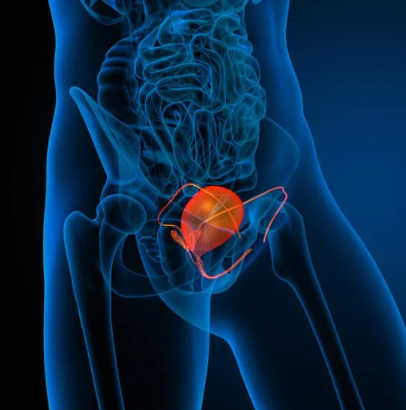Addition of SBRT to Nivolumab/Ipilimumab Does Not Improve Response in mCRPC
SBRT did not significantly impact response when added to nivolumab/ipilimumab for patients with mCRPC.
SBRT did not significantly impact response when added to nivolumab/ipilimumab for patients with mCRPC.

Patients with metastatic castration-resistant prostate cancer (mCRPC) experienced a response with nivolumab (Opdivo) plus ipilimumab (Yervoy); however, the addition of stereotactic body radiation therapy (SBRT) was found to be safe but did not improve efficacy, according to results from the phase 2 CheckPRO trial (NCT05655715) presented at the 2025 American Society of Clinical Oncology Annual Meeting.
The prostate-specific antigen (PSA) response rate for nivolumab plus ipilimumab and SBRT (arm A) was 21.6% (95% CI, 9.8%-38.2%) vs 20.5% (95% CI, 9.8%-35.3%) for nivolumab/ipilimumab alone (arm B). The objective response rate (ORR) was 16.7% (95% CI, 4.7%-37.4%) for arm A vs 22.2% (95 CI, 10.1%-39.2%) for arm B.
The median PSA progression-free survival (PFS) for arm A was 2.6 months (95% CI, 1.9-3.8), and for arm B it was 2.5 months (95% CI, 1.9-3.0). The radiographic PFS was 2.1 months (95% CI, 1.9-3.8) for arm A and 1.9 months (95% CI, 1.8-2.5) for arm B. Additionally, the overall survival (OS) was 10.2 months (95% CI, 7.1-14.1) for arm A and 9.2 months (95% CI, 7.1-14.1) for arm B.
“Responses were demonstrated in a subgroup of patients with mCRPC treated with [immune checkpoint inhibitors (ICI)],” Rikke Eefsen, MD, PhD, a medical oncologist from Herlev and Gentofte Hospital in Denmark, said during the presentation. “The addition of SBRT was safe, but it did not improve treatment outcomes.”
A total of 90 patients were randomly assigned 1:1 to either arm A where they received SBRT at 8 Gy 3 times on a metastasis, nivolumab at 3 mg/kg intravenously every 3 weeks, and ipilimumab at 1 mg/kg intravenously every 3 weeks for 4 cycles; or arm B where they received matched nivolumab/ipilimumab.
From there, patients received 480 mg of intravenous nivolumab every 4 weeks for up to 52 weeks. If patients had progressive disease within the 52 weeks, they had reinduction therapy.
The coprimary end points were PSA response rate, which was the benefit of more than 50% PSA decline at any time or at 12 weeks, which was confirmed 4 weeks later, or progression of more than 25% PSA increase confirmed 3 weeks later; and ORR per Prostate Cancer Working Group RECIST 1.1. Secondary end points included PSA, PFS, radiographic PFS, OS, and toxicities.
Overall, 130 patients were assessed for eligibility, with 39 excluded and 91 randomly assigned—45 patients in arm A and 46 patients in arm B. During follow-up, 37 patients in arm A discontinued intervention compared with 44 in arm B. For arm A, 37 patients were analyzed, and in arm B, 44.
The median patient age in arm A was 72 years; in arm B it was 73 years. An ECOG performance status of 0 was observed in 48.6% vs 47.7% of patients, respectively; 45.9% vs 75.0% of patients had a Gleason score of 7 or more at diagnosis, and 73.0% vs 54.4% had M1 metastases at diagnosis. Additionally, 64.9% vs 81.8% had measurable disease at baseline, and 100% vs 93.2% had 3 or more prior lines of therapy, respectively.
Regarding safety, 81 patients were evaluable. Any-grade adverse effects (AEs) were observed in 100% of patients, and 70.4% had grade 3/4 AEs. Treatment-related AEs (TRAEs) of any grade were observed in 92.6% vs 33.3% for grade 3/4, and treatment-related serious AEs in 34.6% vs 30.9%, respectively.
Notably, any-grade TRAEs included pruritus (39.5%), rash (35.8%), liver transaminase increase (22.2%), hypothyroidism (19.8%), and diarrhea (19.8%). Grade 3/4 AEs included colitis (9.9%), diarrhea (6.2%), hepatitis (4.9%), pneumonitis (3.7%), and hyperglycemia (2.5%).
“Further analyses are ongoing to identify patients with mCRPC, who most likely respond to ICI,” Eefsen concluded.
Reference
Eefsen R, Kongsted P, Spondler N, et al. CA209-8TY trial, a randomized phase 2 trial of nivolumab and ipilimumab with or without stereotactic body radiation therapy in metastatic castration-resistant prostate cancer. Presented at: 2025 American Society of Clinical Oncology Annual Meeting, May 30-June 2, 2025, Chicago, IL. doi:10.1200/JCO.2025.43.16_suppl.5018